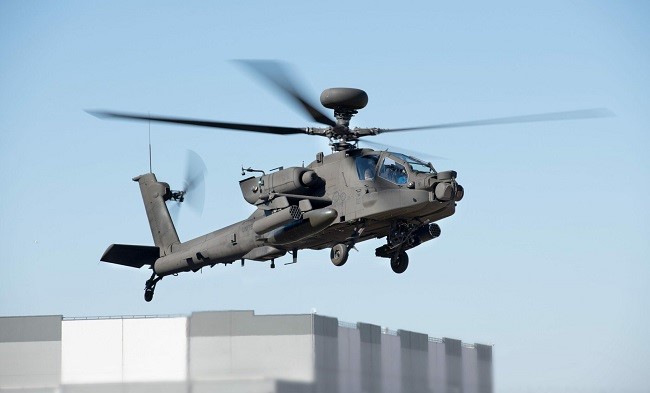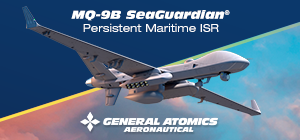
The US government published a Request for Information (RFI) regarding the potential testing of an active electronically scanned array (AESA) radar on US Army AH-64 APACHE attack helicopter, using a standard weapons pylon.
This RFI is expected to initiate a market research to identify potential sources capable of providing a suitable radar. The radar should be able to spot, track, and engage targets, in all-weather conditions and at extended ranges, surface and airborne threats. Additionally, it should enhance the crew’s situational awareness and provide other functionalities.
The US Army plan is to conduct a rapid series of tests at Redstone Arsenal, Alabama, using the latest AH-64E V6 version. The selected AESA radar will be tested and evaluated across a wide variety of desired capabilities including “fire control, pilotage, pilot aid in degraded visual environments (DVE), pole/tower and cable detection, airborne hazards, terrain following (TF), terrain avoidance (TA), shoreline mapping using augmented reality (AR) techniques,” and drones targeting.
In regard to the latter, AESA radars are typically able to spot objects, even small ones and those with low radar cross-sections, faster and farther away. From a technical perspective, an AESA radar differs from a traditional one because it uses a matrix formed of hundreds of very small radar modules that are used to ‘steer’ the radar beam, rather than relying on mechanical antenna movement. This important difference makes AESA radars far more reliable with a better range, fidelity, and resistance to electronic warfare, and able to conduct multiple tasks, from kinetically engaging the targets to electronic attack to communications. Despite the increased performance of the radar and the aerodynamic improvements, mounting an AESA into or beneath the stub wings of a rotary-wing platform could reduce valuable space and weight capacity for other payloads, such as weapons or fuel.
If successfully evaluated, the radar could be employed on other rotary and fixed wing platforms (UH-60 BLACK HAWK), as well as on the Future Long-Range Assault Aircraft (FLRAA). However, the introduction of AESA radars on board helicopters is not new. Russia has already been working to include this kind of technology on its Ka-52 HOKUM attack helicopter, with the naval version (-K) fitted with a Rezets AESA radar, while the land-based Ka-52M is expected to receive the new V006 Rezets from the Zaslon company.
On the western side, Leonardo offers the OSPREY 30 AESA radar that has already been installed on the USN/USMC MQ-8C FIRE SCOUT rotary-wing drone (where it is designated AN/ZPY-8) as well as the on Norwegian AW-101 helicopter.








.png)
